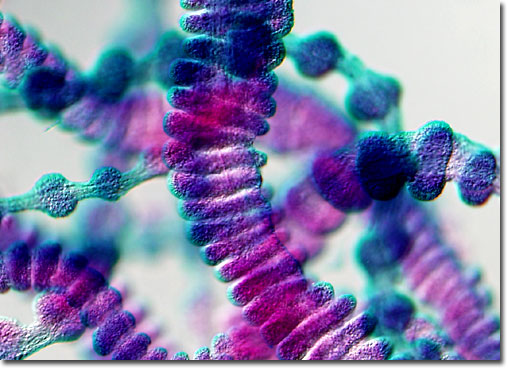|
Aurelia is a genus of scyphozoan jellyfish whose members can commonly be seen floating in coastal waters. Though they do not have eyes or ears, the marine invertebrates do possess sensory organs that allow them to detect light, chemicals, and touch. Moreover, the medusae feature reduced and modified tentacles, known as tentaculocysts, along their margins, which contain hollow sacs called statocysts that maintain equilibrium. If the jellyfish becomes tilted out of its normal swimming axis, the tentaculocysts are stimulated and the statocyst in the highest position leans in such a way that rapid nerve impulses are created. In turn, the stimulated nerve endings cause the muscles of the jellyfish to contract, correcting its position in the water.
|
